
Mount Kinabalu is the highest mountain in the Malay Archipelago and in Malaysia at 13, 435 feet above sea level. It is part of the Crocker Range and the Kinabalu Parks, and has been accorded UNESCO World Heritage status.
This is a well-known site among mountain climbers who are always drawn to challenges. The mountain attracts many climbers especially during the Climbathon, which is a race up and down the mountain. Low’s Peak can be climbed quite easily by a person in good physical condition, other peaks along require rock climbing skills.
For more sedate climbers the arduous journey to the top can be delightful because of the beauty of nature around them.
There are between 5,000 and 6,000 species of plants, 326 species of birds, and more than 100 mammalian species identified to inhabit the region. Fascinating Monkey Cups or Nepenthes as well as the gigantic Rafflesia Plants are some of the more famous plants that are found in the Kinabalu Parks.
The Mountain is sacred to the Kadazandusun people of Sabah, as it is believed that the souls of the dead enter a portal in the mountain to the netherworld. The first derivation of the word Kinabalu is extracted from the short form for the Kadazandusun word ‘Aki Nabalu’, (direct translation dead grandfathers) meaning “the revered place of the dead”. This Mountain is also known as ‘Gayo Ngaran’ (direct translation Big Name) meaning ‘he who can’t be named’.
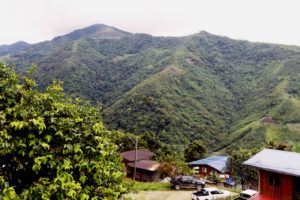
After climbing the mountain, most climbers return feeling a sense of accomplishment and many feel that they need to know more about the people who revere this mountain so much.
Staying longer to get to know the people better is easy as they are warm and friendly as well as welcoming. This is more so among homestay operators. There are villages here that have opened up their doors and a few rooms in their house for guests.
Kampung Kiau Nuluh Kota Belud is one of the villages where 14 among the 100 houses have opened their doors to accommodate visitors under the homestay programme.
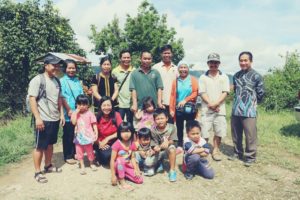
Their homestay is named ‘Guas Nabalu Homestay’ literally meaning ‘foot of Kinabalu Homestay’ and they are a member of the Kadamaian Tourism Association (KATA) which boast some 20 members to date.
One of the homestay operators is Ginik Lunsin, 50, a mountain guide, a pineapple and paddy planter. He offers to rooms in his house to visitors. The rooms are sparsely furnished but are clean and comfortable.
He lives in his house with ten other people including two grandchildren.
His mother-in-law Sobia Lajou, 63, a pineapple planter offers three beautifully decorated rooms for guests. This mother of 14 children has a large beautiful house on the side of a slope but the house is quiet now as all her children are married and live away from home.
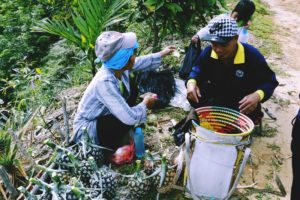
Souna Lajou, 52, lives higher up the slope where she lives with seven others. She has one room to rent out to guests. She is a paddy planter.
Further up the slope lives Juri Lianty, 32, a mountain guide who has one room to let under the programme.
Hanalah Hassan, 35, who lives with three others in her house, offers three rooms to guests. The rooms are small, but clean and well furnished with comfortable beds.
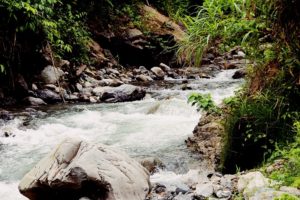
Lusimin Duani, 47, who works with the Kinabalu Parks, has two rooms in his house for homestay guests. They are very well kept and clean. The house is comfortable and welcoming.
Saihing Taradis, 46, is a mountain guide, who has been working as one since 1992. He lives there with his wife and three children, and he has two rooms in his house for guests.
Likat Soborong, 55, a cab driver who lives with his wife Marisia in their big house has two rooms to let out to guests. The bathroom and toilet are built within the house which is convenient for guests.
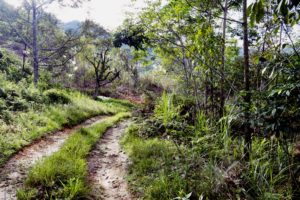
Homestay guests are usually given breakfast lunch and dinner for the tenure of their stay. They usually dine with the family so they will have an idea of what the locals eat and how they prepare their food.
However, guests are not confined to the house and left to wander around to explore the area themselves.
The homestay participants offer many tours and interactive activities for their guests, so they encourage the visitors to stay longer.
“We start the day after breakfast by taking our guests for a village walk. We show them around the village and take them to our pineapple, cocoa plantation and paddy cultivation area,” Ginik shares.
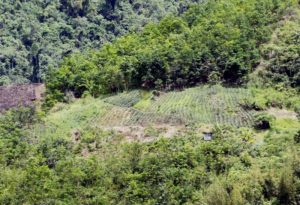
According to him the road towards the pineapple plantations is actually a stroll down history, as it was made by forced labour during the Japanese occupation.
“My father said that several able bodied men from the village were rounded up and forced to make the road with hoes, so that the Japanese can ride their horses around,” Ginik says.
The road is maintained as it is as the villagers used it to go plantation area. It is dirt road but wide enough to accommodate a four wheel drive vehicle, so the villagers can easily carry their produce to town.
“When our guests reach the pineapple plantation, we usually give them a taste of ripe pineapples. Our pineapple is of the sweet variety so our guests are seldom disappointed,” he shares.
He says if the hill paddy is ready for planting or harvesting, their guests are encouraged to participate in the activities.
Besides the people’s activities at their plantation sites, guests will also be able to taste traditional food. This includes vegetables gathered from the jungle; fish caught in the river, pickled fish and pineapple dishes.
Besides the food and the plantations, guests can enjoy picnics at the river. The river Kadamaian rushes through at the valley, creating an incessant rushing noise that’s quite soothing.
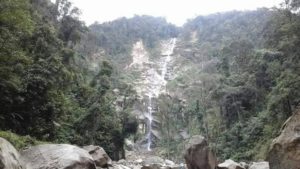
Of course the highlight of any visit is the waterfall. It absolutely amazing and majestic as it falls in crashing cascades on the pool below. The trek to this waterfall is an adventure in itself as trekkers will hike through primary forest, where birds and other animals thrive.
“The flora along the way is also amazing as one can even stumble on Rafflesia blooming. The trek to the water fall takes three to four hours, so this is a whole day activity. There are plans to build a shelter or a camping site near the waterfall to enable guests to rest overnight before making the return trek next day,” Gunik says.
This challenge should really be taken up by visitors. Just mind the leeches.
For those who wish to just relax in the village, they will enjoy the peace and quiet. The village is sited at the foot of the gigantic mountain and so the weather is balmy. Sometimes it’s cold in the morning and the whole village can be shrouded in mists until almost midday.
Kg Kiau Nuluh was effected by the earthquake in 2015 but it shows very little scar of the damage experienced during the event. The houses that cling to the steep mountain side are intact and safe.-CE/BNN






